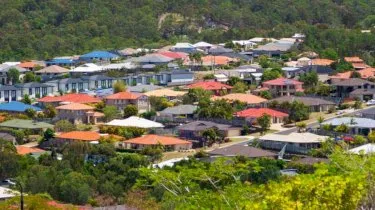Invest
Mortgage defaults linger as credit approvals fall further
Dwindling housing markets are expected to prolong the number of days borrowers are in arrears in 2019, while credit growth is expected to slow even further, presenting significant challenges for property investors.
Mortgage defaults linger as credit approvals fall further
Dwindling housing markets are expected to prolong the number of days borrowers are in arrears in 2019, while credit growth is expected to slow even further, presenting significant challenges for property investors.

According to Fitch Ratings’ Global Housing and Mortgage Outlook 2019 report, home loans will “remain delinquent for longer”, with properties in possession taking longer to sell amid weakening housing market conditions, which it said were triggered by the curb in lending and policy tightening.
Fitch added that it also expects delinquencies over 90 days to “increase slightly” to 70 basis points by 2020 but expects early-stage arrears (30 to 90 days) to “remain broadly stable” in 2019 at 60 basis points “even though lenders have modestly raised mortgage rates for investment and interest-only loans”.
The ratings agency added that mortgage performance would be “supported by slowing but still solid economic growth, decreasing unemployment and only gradually rising policy and mortgage rates”.
Further, the housing market correction expected in 2019 would be the worst of any other nation analysed in the report, the agency said, with Australia’s household debt-to-GDP ratio also higher than in any other economy listed in the report (121 per cent).

It predicted a further 5 per cent decline in dwelling values throughout the year, before stabilising in 2020.
According to Fitch, the most expensive quartile of properties has experienced the largest declines with prices dropping by 9.5 per cent peak-to-trough compared to the overall decline of 6.7 per cent.
Housing credit to slow further
Fitch has also forecast additional slowing in credit conditions, which it expects to ease further from growth of 5.1 per cent in the year to 31 October 2018 to 3.5 per cent.
Fitch said that the flow of credit would be hindered by a “conservative interpretation of regulatory guidelines” for mortgage serviceability in light of the financial services royal commission.
It believes Commissioner Kenneth Hayne’s final report, due to be released in February, would also trigger a new phase of credit tightening.
Fitch concluded that restrictions on investor lending, through regulatory tightening, government levies on foreign investors and state government taxes, would also weigh on credit demand.
The report coincides with the latest Housing Finance data from the Australian Bureau of Statistics, which has reported a 2.5 per cent fall in the value of home loan approvals in November 2018, in seasonally adjusted terms, driven by a 4.5 per cent decline in investor lending and a 1.4 per cent slump in owner-occupied lending.

Property
New investment platform Arkus allows Australians to invest in property for just $1
In a groundbreaking move to democratise investment in property-backed mortgage funds, GPS Investment Fund Limited has launched Arkus™, a retail investment platform designed to make investing ...Read more

Property
Help to Buy goes live: What 40,000 new buyers mean for banks, builders and the bottom line
Australia’s Help to Buy has opened, lowering the deposit hurdle to 2 per cent and aiming to support up to 40,000 households over four years. That single policy lever will reverberate through mortgage ...Read more

Property
Australia’s mortgage knife‑fight: investors, first‑home buyers and the new rules of lender competition
The mortgage market is staying hot even as rate relief remains elusive, with investors and first‑home buyers chasing scarce stock and lenders fighting for share on price, speed and digital experienceRead more

Property
Breaking Australia’s three‑property ceiling: the finance‑first playbook for scalable portfolios
Most Australian investors don’t stall at three properties because they run out of ambition — they run out of borrowing capacity. The ceiling is a finance constraint disguised as an asset problem. The ...Read more

Property
Gen Z's secret weapon: Why their homebuying spree could flip Australia's housing market
A surprising share of younger Australians are preparing to buy despite affordability headwinds. One in three Gen Z Australians intend to purchase within a few years and 32 per cent say escaping rent ...Read more

Property
Tasmania’s pet-positive pivot: What landlords, BTR operators and insurers need to do now
Tasmania will soon require landlords to allow pets unless they can prove a valid reason to refuse. This is more than a tenancy tweak; it is a structural signal that the balance of power in rental ...Read more

Property
NSW underquoting crackdown: the compliance reset creating both cost and competitive edge
NSW is moving to sharply increase penalties for misleading price guides, including fines linked to agent commissions and maximum penalties up to $110,000. Behind the headlines sits a more ...Read more

Property
ANZ’s mortgage growth, profit slump: why volume without margin won’t pay the dividends
ANZ lifted home-lending volumes, yet profits fell under the weight of regulatory and restructuring costs—an object lesson in the futility of growth that doesn’t convert to margin and productivityRead more

Property
New investment platform Arkus allows Australians to invest in property for just $1
In a groundbreaking move to democratise investment in property-backed mortgage funds, GPS Investment Fund Limited has launched Arkus™, a retail investment platform designed to make investing ...Read more

Property
Help to Buy goes live: What 40,000 new buyers mean for banks, builders and the bottom line
Australia’s Help to Buy has opened, lowering the deposit hurdle to 2 per cent and aiming to support up to 40,000 households over four years. That single policy lever will reverberate through mortgage ...Read more

Property
Australia’s mortgage knife‑fight: investors, first‑home buyers and the new rules of lender competition
The mortgage market is staying hot even as rate relief remains elusive, with investors and first‑home buyers chasing scarce stock and lenders fighting for share on price, speed and digital experienceRead more

Property
Breaking Australia’s three‑property ceiling: the finance‑first playbook for scalable portfolios
Most Australian investors don’t stall at three properties because they run out of ambition — they run out of borrowing capacity. The ceiling is a finance constraint disguised as an asset problem. The ...Read more

Property
Gen Z's secret weapon: Why their homebuying spree could flip Australia's housing market
A surprising share of younger Australians are preparing to buy despite affordability headwinds. One in three Gen Z Australians intend to purchase within a few years and 32 per cent say escaping rent ...Read more

Property
Tasmania’s pet-positive pivot: What landlords, BTR operators and insurers need to do now
Tasmania will soon require landlords to allow pets unless they can prove a valid reason to refuse. This is more than a tenancy tweak; it is a structural signal that the balance of power in rental ...Read more

Property
NSW underquoting crackdown: the compliance reset creating both cost and competitive edge
NSW is moving to sharply increase penalties for misleading price guides, including fines linked to agent commissions and maximum penalties up to $110,000. Behind the headlines sits a more ...Read more

Property
ANZ’s mortgage growth, profit slump: why volume without margin won’t pay the dividends
ANZ lifted home-lending volumes, yet profits fell under the weight of regulatory and restructuring costs—an object lesson in the futility of growth that doesn’t convert to margin and productivityRead more








